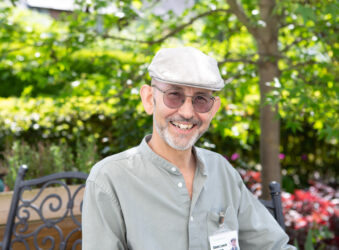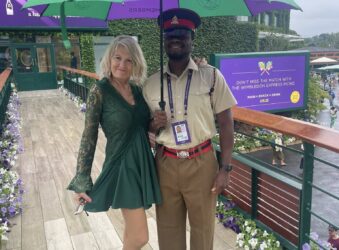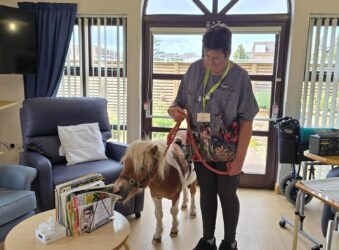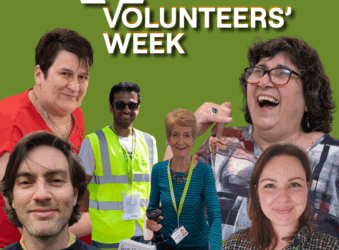Volunteer shares his Astronomy knowledge with the general public
Share this story
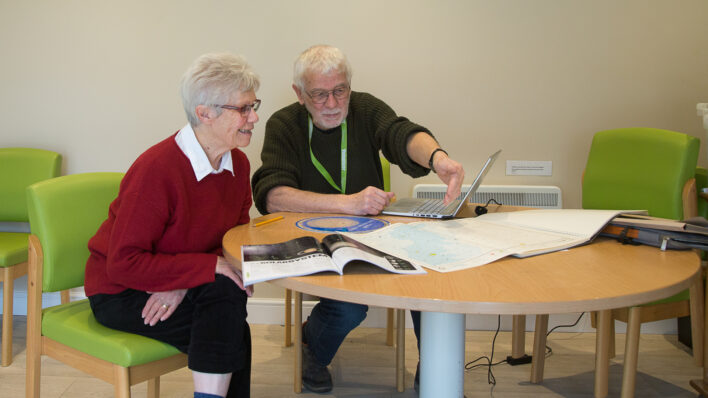
Peter Howell has volunteered for over five years at Arthur Rank Hospice Charity. He provides beginners’ Astronomy sessions in Arthur’s Shed – a beautiful studio based in the grounds of Arthur Rank Hospice based at Shelford Bottom in Cambridge.
Like all the free activities in Arthur’s Shed, the Astronomy sessions are open to anyone in the community. Parking is available nearby at the Babraham Road Park & Ride or disabled parking in the Hospice car park.
The Charity also has a Bistro, open to the public, every day from 9:00am-4:00pm, where you can enjoy morning coffee, lunch or afternoon tea and cake!
Peter shared, that by participating in these sessions, people can learn something new and find out more about the Charity in a relaxed atmosphere.
What inspired you to volunteer with the Charity?
“I am a member of Cambridgeshire RAYNET (Radio Amateurs emergencY NETwork). Under the terms of the amateur radio licence, radio amateurs are obliged to assist the user services in a civil emergency. These are the fire, police, ambulance, Royal National Lifeboat Institution (RNLI), local authority etc.
In Cambridgeshire RAYNET, we keep our skills and training up to date by supporting the voluntary sector in their fundraising events. We have supported Arthur Rank Hospice Charity’s events such as Bridge the Gap and Star Shine Night Walk over many years. We are deployed around the course, with the marshals, and radio back to the organiser to give them a real-time view of the progress of the event and any first-aid issues which arise.
We enjoy working in the Charity’s events as they are so well organised. I found out about the Charity through working in the events, and one of the members of the Events Team suggested that I might like to volunteer for Arthur’s Shed.”
What is the best thing about what you do?
“Astronomy has been my hobby since the age of eight years old when an Aunt gave me one of Sir Patrick Moore’s first books; “The Boy’s Book of Astronomy”. I was hooked from page one! Being able to share my enthusiasm for the subject with the people who attend the talks is so enjoyable.”
Can you share a memorable moment you’ve experienced while working at the Charity?
“As part of the series of talks, we have occasional practical sessions. We have made two sundials as part of the module on the sun. My memorable moment was hearing someone say, after they had successfully made a working sundial:
“Wow! I didn’t realise that sundials are so complex and that they are models of the Earth and it’s orbit around the Sun – but I think I understand it a bit now”.
Please share your inspiration or something that we may not know!
“Astronomy is linked to the measurement of time in so many ways. Depending upon how you choose to define it, there are:
- Five ways to define the length of a year
- Five ways to define the length of a month
- Three ways to define the length of a day.
Can you explain, in layman’s terms, why we have an extra day in a leap year?
For our convenience, we use a calendar that has 365 days in a year and 24 hours in a day. However, the astronomical year is a little under 365.25 days – this is the time for the earth to return to an identical position in it’s orbit. Every four years an extra day (29 February) is inserted to bring the calendar almost back into line with the astronomical year.
If we didn’t do this, over time the calendar date for the seasons would unavoidably drift and not coincide with the actual seasons. However, even this correction is not quite good enough, but leap years keep the calendar and the astronomical year in synchronism – on average.”
If you would like to join Peter to hear more about Astronomy, or see the schedule for different creative activities, please visit our website: arhc.org.uk/arthursshed or email Arthurs.shed@arhc.org.uk or telephone 01223 675777.
View other stories
-

Living Well Patients at the Hospice relax with Meditation
David Lynch from The Mindful Green Coach, visits the Living Well Service
-

Cambridge Hospice Volunteer supports with pre-loved fashion at Wimbledon Tennis Tournaments in London
Volunteer, Nadia Macari-Brown supports the Charity at one of the most famous sporting events in the world
-

The Alan Hudson Centre receives an unexpected visit!
Volunteer, Anna brings in her pony!
-

Hospice Volunteers recognised during National Volunteers Week 2025
Arthur Rank Hospice Charity says thank you to over 600 volunteers

